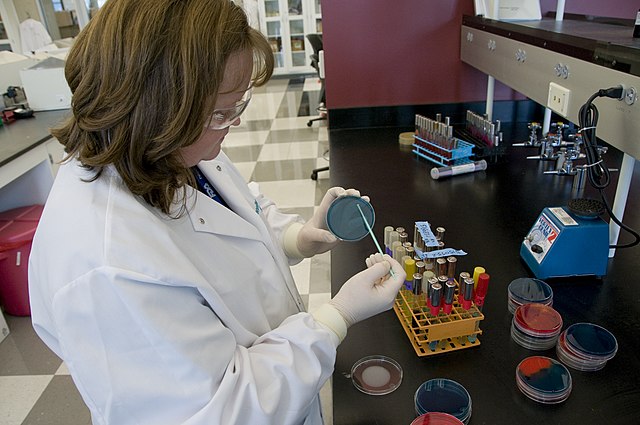A Petri dish is a shallow transparent lidded dish that biologists use to hold growth medium in which cells can be cultured, originally, cells of bacteria, fungi and small mosses. The container is named after its inventor, German bacteriologist Julius Richard Petri. It is the most common type of culture plate. The Petri dish is one of the most common items in biology laboratories and has entered popular culture. The term is sometimes written in lower case, especially in non-technical literature.
A glass Petri dish with culture
A Petri dish with bacterial colonies on an agar-based growth medium
Axenic cell culture of the plant Physcomitrella patens on an agarplate in a Petri dish
A growth medium or culture medium is a solid, liquid, or semi-solid designed to support the growth of a population of microorganisms or cells via the process of cell proliferation or small plants like the moss Physcomitrella patens. Different types of media are used for growing different types of cells.
An agar plate – an example of a bacterial growth medium*: Specifically, it is a streak plate; the orange lines and dots are formed by bacterial colonies.
US Food and Drug Administration scientist tests for Salmonella
A culture of salmonella bacteria
Physcomitrella patens plants growing axenically on agar plates (Petri dish, 9 cm diameter)





